Do you have a question about the Porter-Cable 4210 and is the answer not in the manual?
Crucial safety guidelines for using the tool to prevent injury.
Additional safety precautions to follow for safe operation of the jig.
Provides context and purpose for the supplemental manual.
Simplifies dovetailing projects with helpful tips and methods.
Using a dead-blow hammer to join workpieces without marring.
Chamfering tail edges to ease joint assembly and prevent pin damage.
Accurate method for setting router bit depth for flush pins/tails and inlay.
Using a nut to secure brass adjustment knobs for repetitive setups.
Cutting through-dovetails using templates mounted on clamping boards.
Steps for setting up templates on clamping boards for dovetails.
Detailed steps for cutting the tail board using the clamping board setup.
Detailed steps for cutting the pin board using the clamping board setup.
Instructions on how to fit the cut dovetail joint for proper assembly.
Setup instructions for cutting dovetails on wide boards.
Steps for cutting tails on wide boards using the template method.
Steps for cutting pins on wide boards using the template method.
Fitting the joint for wide boards, similar to standard dovetails.
Detailed steps for the alternate method of cutting wide dovetails.
Items and steps needed to set up for half-blind dovetails on clamping boards.
Steps for cutting the half-blind dovetail joint with clamping boards.
Safety advice regarding protective handles when using a router table.
Information on selecting and using through-dovetail router bits.
Details on using alternate bits for making half-blind dovetails.
A table listing readily available half-blind dovetail bits and their depths.
Method for making half-blind dovetails by cutting tails and pins separately.
Table of bit combinations for cutting half-blind dovetails separately.
Using different router bits to create box joints.
Using dovetail bits to create dovetail dados (sliding dovetails).
Technique for making half-blind dovetails with thicker tail boards.
Steps for cutting tails on a mitered through-dovetail joint.
Steps for cutting pins on a mitered through-dovetail joint.
How to miter the pins after cutting them for the joint.
How to miter the tails after cutting them for the joint.
A method for cutting through-dovetails where some pins are omitted.
Cutting tails for the skipped-pin through-dovetail method.
Cutting pins for the skipped-pin through-dovetail method.
A method for cutting half-blind dovetails with omitted pins.
Steps for cutting pins in the half-blind dovetail, skipped pin method.
Cutting tails using the saw kerf allowance method.
Cutting pins using the saw kerf allowance method.
Modifying the saw kerf method with multiple spacers for varied pin/tail spacing.
Joining boards end-to-end to create longer or larger panels.
Making box joints that join boards end-to-end.
Combining box and half-blind dovetail for end-to-end joints.
Making drawers using dovetail dados (sliding dovetails).
Creating 180° hinges using a drilled hole for the pin.
Making hinges with a range of motion of 270° or more using a drilled hole.
Creating 180° hinges using router-made grooves for the pin.
Making hinges with a 270° range of motion using router-made grooves.
Joining boards at an angle greater than 90 degrees.
Setting up the jig for obtuse angled joints when the template is base-mounted.
Setting up the jig for obtuse angled joints when the template is board-mounted.
Cutting the tails for obtuse angled joints with a board-mounted template.
Cutting the pins for obtuse angled joints with a board-mounted template.
Fitting the obtuse angled dovetail joint.
Setup for acute angled joints, similar to obtuse angled joints.
Cutting the tails for acute angled joints.
Cutting the pins for acute angled joints.
Cutting the tails for slanted-side joints.
Cutting the pins for slanted-side joints.
Setting up for compound-angle joints using table saw angles.
Cutting the tails for compound-angle joints.
Cutting the pins for compound-angle joints.
Producing through-dovetails with an inlay line.
Setup for creating inlaid through-dovetails using specific bit combinations.
Cutting the inlay board to the correct thickness after joint drying.
Making the second joint for the inlaid through-dovetail.
Creating half-blind dovetails with an inlay line on top of each other.
Setup for creating inlaid half-blind dovetails.
Making the first joint for inlaid half-blind dovetails.
Cutting the inlay board after the first joint is made.
Making the second joint for inlaid half-blind dovetails.
Making box joints with an inlay line on top of each other.
Guidance on resolving issues and obtaining assistance with the tool.
Instructions for cleaning and maintaining the dovetail jig.
Information on obtaining service and replacement parts for the tool.
Information on available accessories for the dovetail jig.
Crucial safety guidelines for using the tool to prevent injury.
Additional safety precautions to follow for safe operation of the jig.
Provides context and purpose for the supplemental manual.
Simplifies dovetailing projects with helpful tips and methods.
Using a dead-blow hammer to join workpieces without marring.
Chamfering tail edges to ease joint assembly and prevent pin damage.
Accurate method for setting router bit depth for flush pins/tails and inlay.
Using a nut to secure brass adjustment knobs for repetitive setups.
Cutting through-dovetails using templates mounted on clamping boards.
Steps for setting up templates on clamping boards for dovetails.
Detailed steps for cutting the tail board using the clamping board setup.
Detailed steps for cutting the pin board using the clamping board setup.
Instructions on how to fit the cut dovetail joint for proper assembly.
Setup instructions for cutting dovetails on wide boards.
Steps for cutting tails on wide boards using the template method.
Steps for cutting pins on wide boards using the template method.
Fitting the joint for wide boards, similar to standard dovetails.
Detailed steps for the alternate method of cutting wide dovetails.
Items and steps needed to set up for half-blind dovetails on clamping boards.
Steps for cutting the half-blind dovetail joint with clamping boards.
Safety advice regarding protective handles when using a router table.
Information on selecting and using through-dovetail router bits.
Details on using alternate bits for making half-blind dovetails.
A table listing readily available half-blind dovetail bits and their depths.
Method for making half-blind dovetails by cutting tails and pins separately.
Table of bit combinations for cutting half-blind dovetails separately.
Using different router bits to create box joints.
Using dovetail bits to create dovetail dados (sliding dovetails).
Technique for making half-blind dovetails with thicker tail boards.
Steps for cutting tails on a mitered through-dovetail joint.
Steps for cutting pins on a mitered through-dovetail joint.
How to miter the pins after cutting them for the joint.
How to miter the tails after cutting them for the joint.
A method for cutting through-dovetails where some pins are omitted.
Cutting tails for the skipped-pin through-dovetail method.
Cutting pins for the skipped-pin through-dovetail method.
A method for cutting half-blind dovetails with omitted pins.
Steps for cutting pins in the half-blind dovetail, skipped pin method.
Cutting tails using the saw kerf allowance method.
Cutting pins using the saw kerf allowance method.
Modifying the saw kerf method with multiple spacers for varied pin/tail spacing.
Joining boards end-to-end to create longer or larger panels.
Making box joints that join boards end-to-end.
Combining box and half-blind dovetail for end-to-end joints.
Making drawers using dovetail dados (sliding dovetails).
Creating 180° hinges using a drilled hole for the pin.
Making hinges with a range of motion of 270° or more using a drilled hole.
Creating 180° hinges using router-made grooves for the pin.
Making hinges with a 270° range of motion using router-made grooves.
Joining boards at an angle greater than 90 degrees.
Setting up the jig for obtuse angled joints when the template is base-mounted.
Setting up the jig for obtuse angled joints when the template is board-mounted.
Cutting the tails for obtuse angled joints with a board-mounted template.
Cutting the pins for obtuse angled joints with a board-mounted template.
Fitting the obtuse angled dovetail joint.
Setup for acute angled joints, similar to obtuse angled joints.
Cutting the tails for acute angled joints.
Cutting the pins for acute angled joints.
Cutting the tails for slanted-side joints.
Cutting the pins for slanted-side joints.
Setting up for compound-angle joints using table saw angles.
Cutting the tails for compound-angle joints.
Cutting the pins for compound-angle joints.
Producing through-dovetails with an inlay line.
Setup for creating inlaid through-dovetails using specific bit combinations.
Cutting the inlay board to the correct thickness after joint drying.
Making the second joint for the inlaid through-dovetail.
Creating half-blind dovetails with an inlay line on top of each other.
Setup for creating inlaid half-blind dovetails.
Making the first joint for inlaid half-blind dovetails.
Cutting the inlay board after the first joint is made.
Making the second joint for inlaid half-blind dovetails.
Making box joints with an inlay line on top of each other.
Guidance on resolving issues and obtaining assistance with the tool.
Instructions for cleaning and maintaining the dovetail jig.
Information on obtaining service and replacement parts for the tool.
Information on available accessories for the dovetail jig.
| Brand | Porter-Cable |
|---|---|
| Model | 4210 |
| Category | Saw |
| Language | English |


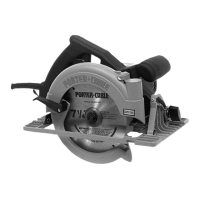
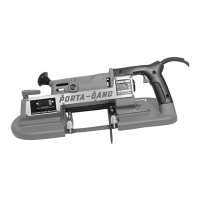
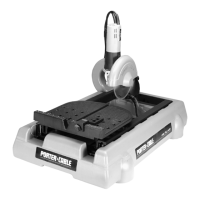
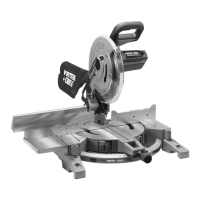
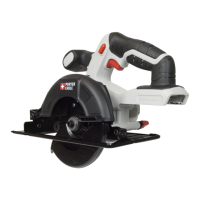
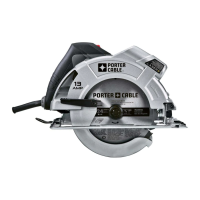
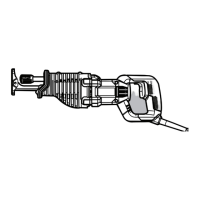
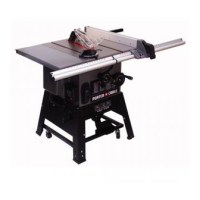
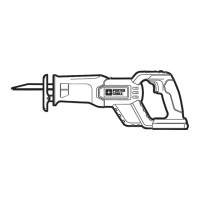

